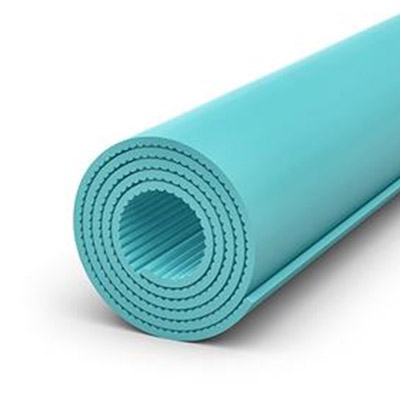
-
 Afrikaans
Afrikaans -
 Arabic
Arabic -
 Belarusian
Belarusian -
 Bengali
Bengali -
 Bulgarian
Bulgarian -
 Croatian
Croatian -
 Czech
Czech -
 Danish
Danish -
 Dutch
Dutch -
 English
English -
 Finnish
Finnish -
 French
French -
 German
German -
 Greek
Greek -
 hawaiian
hawaiian -
 Hebrew
Hebrew -
 Hindi
Hindi -
 Hungarian
Hungarian -
 Indonesian
Indonesian -
 irish
irish -
 Italian
Italian -
 Japanese
Japanese -
 Javanese
Javanese -
 kazakh
kazakh -
 Khmer
Khmer -
 Korean
Korean -
 Kyrgyz
Kyrgyz -
 Lao
Lao -
 Latin
Latin -
 Luxembourgish
Luxembourgish -
 Malay
Malay -
 Myanmar
Myanmar -
 Norwegian
Norwegian -
 Persian
Persian -
 Polish
Polish -
 Portuguese
Portuguese -
 Romanian
Romanian -
 Russian
Russian -
 Serbian
Serbian -
 Slovak
Slovak -
 Somali
Somali -
 Spanish
Spanish -
 Swedish
Swedish -
 Tagalog
Tagalog -
 Thai
Thai -
 Turkish
Turkish -
 Turkmen
Turkmen -
 Ukrainian
Ukrainian -
 Uighur
Uighur -
 Vietnamese
Vietnamese
Kas . 22, 2024 08:10 Back to list
all types of mountain bikes
All Types of Mountain Bikes A Comprehensive Guide
Mountain biking is an exhilarating sport that allows riders to explore the great outdoors, tackle challenging terrains, and connect with nature. Given the diverse landscapes and riding styles, various types of mountain bikes have been developed to cater to different rider needs and preferences. This article will delve into the main categories of mountain bikes, highlighting their unique features and ideal uses.
1. Cross-Country Bikes (XC)
Cross-country bikes are designed for speed and efficiency on both climbs and flat terrains. They typically feature lightweight frames and a geometry focused on pedaling efficiency. Cross-country bikes come with either hardtail or full-suspension options, with hardtails being lighter and more responsive, while full-suspension models offer better comfort over rougher terrains. XC bikes are ideal for competitive riders, trail enthusiasts, and anyone looking for long-distance rides on varied terrain.
2. Trail Bikes
Trail bikes are perhaps the most versatile type, bridging the gap between cross-country and all-mountain bikes. They are designed to handle a wide range of trails, from smooth singletrack to technical descents. With moderate suspension travel (usually between 120mm to 150mm), trail bikes strike a balance between climbing capability and descending prowess. These bikes often have a more relaxed geometry compared to XC bikes, providing stability and comfort. Trail bikes are perfect for riders who want a jack-of-all-trades bike for everyday adventures.
3. All-Mountain Bikes (Enduro Bikes)
All-mountain bikes, often referred to as enduro bikes, are built for more aggressive riding. They feature longer suspension travel (150mm to 180mm) to tackle rough terrains, steep descents, and rugged trails. These bikes are heavier than trail bikes but offer superior shock absorption and stability during downhill rides. The geometry of all-mountain bikes is designed to enhance control and handling on technical descents while still being competent climbers. Enduro racing has become popular, making these bikes a go-to for riders seeking adrenaline-fueled experiences.
all types of mountain bikes

4. Downhill Bikes
Downhill bikes are purpose-built for descending steep, technical terrains at high speeds. With front and rear suspension travel often exceeding 200mm, these bikes prioritize stability and control over climbing capability. They typically have a robust and heavy frame that can withstand the rigors of downhill racing. Downhill bikes come with a unique geometry that lowers the center of gravity, allowing for better handling on steep drops and jumps. Ideal for bike parks and dedicated downhill courses, these bikes are all about conquering gravity.
5. Fat Bikes
Fat bikes are designed for riding on soft surfaces, such as snow and sand, thanks to their extra-wide tires (usually 3.8 inches or wider). The large tires provide excellent traction and stability, allowing riders to float over soft terrains that would be challenging for traditional mountain bikes. Fat bikes come in various frame materials, including aluminum and carbon fiber, and can be equipped with either single speeds or multiple gears. They are perfect for winter biking adventures or for those who want to explore less-traveled paths.
6. Electric Mountain Bikes (e-MTBs)
Electric mountain bikes have gained popularity in recent years, providing riders with added power and assistance. e-MTBs are equipped with a pedal-assist motor that helps with climbing and tackling tough trails. These bikes maintain the same rugged features of traditional mountain bikes while offering the option to extend rides and tackle more challenging terrain without as much physical strain. They are ideal for both beginners and seasoned riders looking to explore further with less effort.
Conclusion
Choosing the right mountain bike is crucial for maximizing your riding experience. With an array of options available—from cross-country to downhill and fat bikes—it's essential to consider your riding style, the types of terrain you plan to tackle, and your personal preferences. By understanding the various types of mountain bikes, you can make an informed decision that suits your adventure needs. Whether you're a competitive racer or a weekend ride enthusiast, the right bike will enhance your mountain biking journey.
-
Red Black BMX Bike with GPT-4-Turbo AI Tech
NewsJul.31,2025
-
New Red Anti-theft E-Bike | Easy Ride City Commuter
NewsJul.31,2025
-
BMX 20 Inch Bikes for Freestyle & Street | Fat Tire Options Available
NewsJul.30,2025
-
322 High Quality 26 Inch 21 Speed Adult Mountain Bike OEM MTB
NewsJul.29,2025
-
Specialized Kids Mountain Bikes - Safe, Durable & Fun Riding Experience
NewsJul.29,2025
-
Little Kids Mountain Bike - Lightweight Bikes for Young Riders
NewsJul.29,2025

